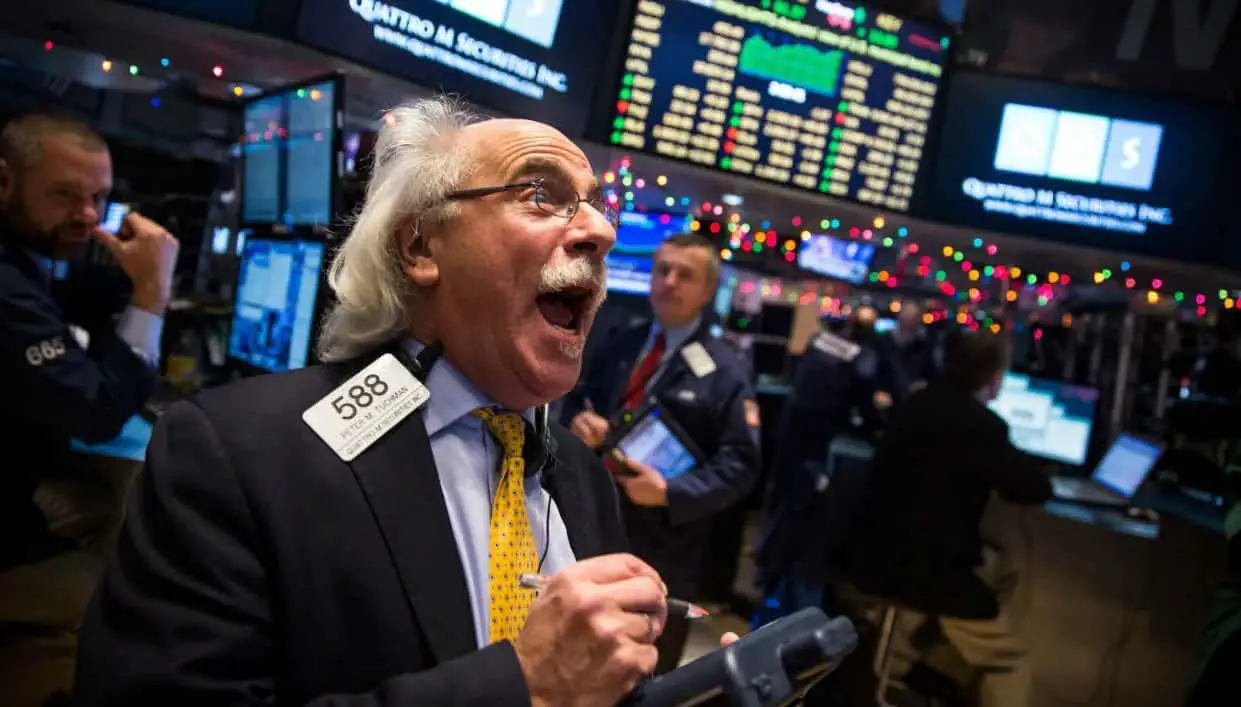Table of Contents
Peter Tuchman is a renowned Wall Street trader with over three decades of experience on the New York Stock Exchange (NYSE) floor. Known as the “Einstein of Wall Street” for his distinctive white hair and energetic demeanor, Tuchman has become one of the most recognizable figures in the financial industry. He began his career in the early 1980s and has navigated numerous market booms and busts with skill and resilience.

Tuchman is frequently sought after by media outlets for his insights and commentary on market trends and developments. Beyond his trading understanding, he is celebrated for his engaging personality and ability to demystify complex financial concepts for the general public. His extensive experience and unique perspective make him a respected voice in finance.
Critical Components of the Strategy
- Exponential Moving Averages (EMAs)
- Relative Strength Index (RSI)
- Pivot Points
Exponential Moving Averages (EMAs)
Peter Tuchman employs five different EMAs in his strategy: the 9, 15, 30, 65, and 200 periods. Each of these EMAs serves a distinct purpose:
- 9 EMA: This short-term EMA reacts quickly to price changes. It is primarily used to capture short-term trends and momentum.
- 15 EMA: Slightly less reactive than the 9 EMA, the 15 EMA helps to smooth out price fluctuations and confirms short-term trends.
- 30 EMA: This medium-term EMA provides a more balanced view of the market, filtering out short-term noise while still being responsive to price movements.
- 65 EMA: The 65 EMA is used to identify intermediate trends, offering a broader perspective than the shorter EMAs.
- 200 EMA: This long-term EMA is crucial for identifying major trends and significant support and resistance levels. It is less affected by short-term price fluctuations, making it a reliable indicator of the overall market direction.
Relative Strength Index (RSI)
The RSI is a momentum oscillator that measures the speed and change of price movements. It oscillates between 0 and 100 and is typically used to identify overbought or oversold conditions:
- Overbought Conditions: When the RSI is above 70, it indicates that the asset may be overbought, suggesting a potential for a price correction.
- Oversold Conditions: When the RSI is below 30, it indicates that the asset may be oversold, suggesting a potential for a price increase.
Pivot Points
Tuchman uses Pivot Points to determine potential support and resistance levels. They are calculated based on the previous trading session’s high, low, and closing prices. The main pivot point (P) is the central point around which the price tends to fluctuate, with additional levels providing potential entry, stop loss, and target prices:
- Main Pivot Point (P): (High + Low + Close) / 3
- Support Levels (S1, S2, S3): These are levels below the central pivot point, where the price might find support and reverse upwards.
- Resistance Levels (R1, R2, R3): These are levels above the central pivot point, where the price might encounter resistance and reverse downwards.
Combining the Indicators
Tuchman’s strategy integrates these components to create a cohesive trading plan:
- Trend Identification: The EMAs are used to identify the current trend. For instance, if the price is above the 200 EMA and the 9, 15, and 30 EMAs are also above the 200 EMA, it indicates a strong uptrend. Conversely, if the price is below the 200 EMA and the other EMAs are below it, it indicates a downtrend.
- Entry Triggers: Tuchman looks for confluence between the EMAs and the RSI to time his entries. For example, he might enter a trade in an uptrend when the price pulls back to the 9 or 15 EMA and the RSI is above 50 but not overbought. He might enter a trade in a downtrend when the price retraces to the 9 or 15 EMA and the RSI is below 50 but not oversold.
- Pivot Points for Entry, Stop Loss, and Targets: Once the trend and entry triggers are identified, Tuchman uses Pivot Points to refine his entry, stop loss, and target levels. For instance, he might set his entry slightly above a pivot point in an uptrend or below a pivot point in a downtrend. Stop losses are typically placed below the nearest support level in an uptrend or above the nearest resistance level in a downtrend. Target levels are set at subsequent pivot points or support/resistance levels.
Example Trade Scenario
Let’s consider an example to illustrate Tuchman’s strategy in action:
- Identifying the Trend: The price is trading above the 200 EMA, and the 9, 15, and 30 EMAs are also above the 200 EMA, indicating a solid uptrend.
- Entry Trigger: The price pulls back to the 15 EMA, and the RSI is at 55, indicating a potential entry point as the price is neither overbought nor oversold.
- Pivot Points: The central pivot point (P) is calculated at 100. The price pulls back to 99 (near the 15 EMA), above the support level S1 (98). Tuchman enters the trade at 99.5, slightly above the support level.
- Stop Loss: The stop loss is at 97.5, just below the support level S1.
- Target: The target is 103, near the resistance level R2.
Conclusion
Peter Tuchman’s trading strategy is robust and well-rounded. It leverages the strengths of EMAs, RSI, and Pivot Points to identify high-probability trading opportunities. By focusing on trend identification, precise entry triggers, and clearly defined support and resistance levels, Tuchman’s strategy offers a comprehensive framework for navigating the complexities of the financial markets. This systematic approach helps make informed trading decisions and manage risk effectively, ensuring traders achieve consistent and sustainable results.
























